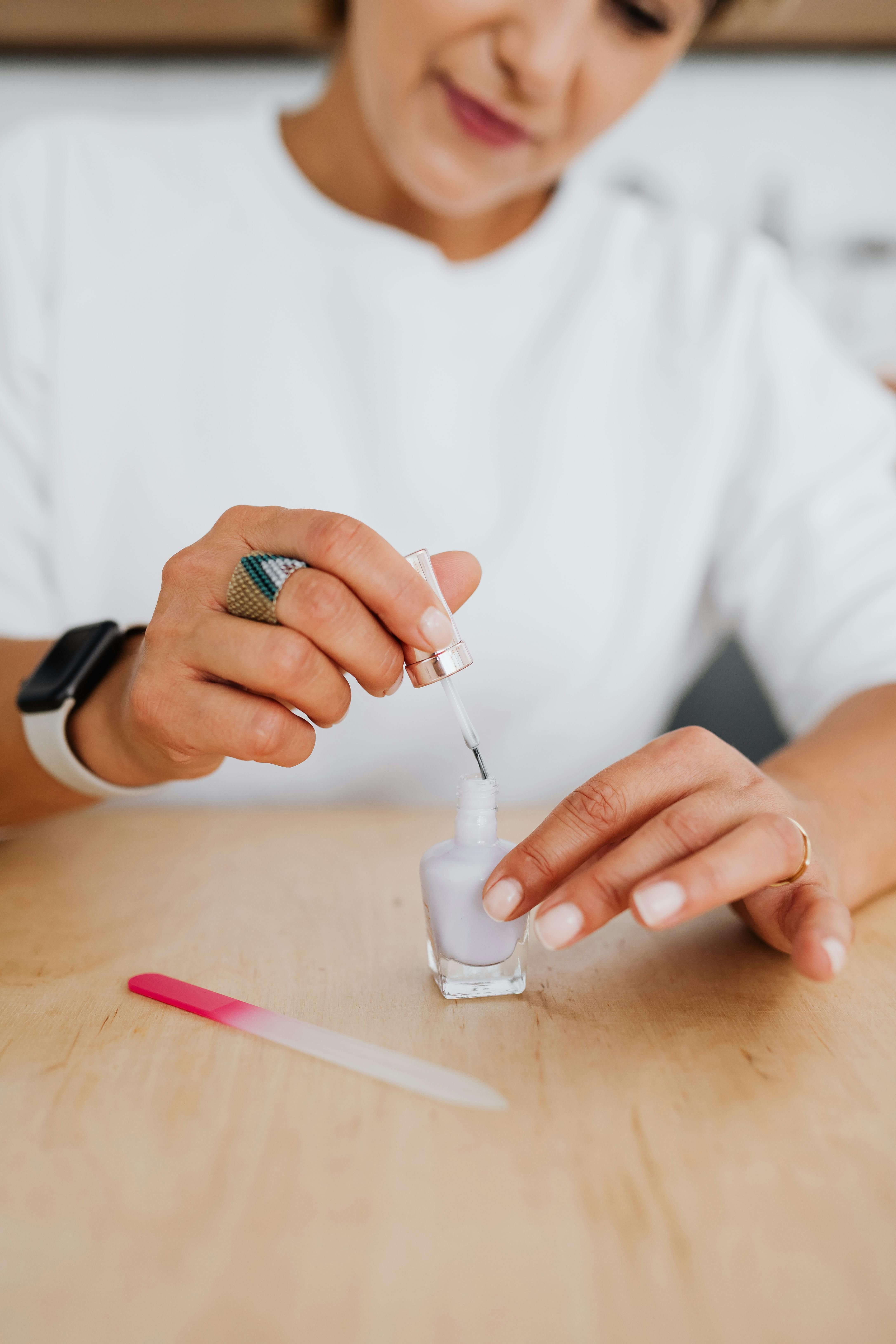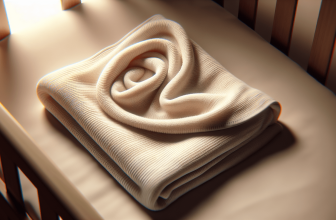Are you a new parent looking for ways to bond with your baby while also providing them with numerous health benefits? Look no further than baby massage. In this article, we will explore the various techniques and oils you can use to give your little one a soothing and beneficial massage experience. From promoting better sleep to aiding digestion, baby massage has been shown to have a multitude of advantages for both parents and babies alike. So, grab some massage oil and get ready to give your baby the gentle touch they deserve.

This image is property of images.pexels.com.
Benefits of Baby Massage
Promotes Bonding between Parent and Baby
One of the key benefits of baby massage is the strong bond it helps foster between the parent and the baby. Through the gentle and loving touch of a massage, parents can create a deep emotional connection with their little one. The physical contact during the massage session stimulates the release of oxytocin, also known as the “love hormone,” in both the baby and the parent. This hormone helps strengthen the attachment between them, contributing to a sense of security, trust, and overall well-being for the baby.
Enhances Baby’s Emotional and Cognitive Development
Baby massage has been shown to have a positive impact on the emotional and cognitive development of infants. Research suggests that regular massage sessions can help babies develop better self-regulation skills, emotional intelligence, and overall emotional well-being. The soothing touch during the massage releases endorphins, which are natural pain relievers and mood boosters. These endorphins help calm the baby’s nervous system, reduce anxiety, and enhance their ability to cope with stress.
Improves Baby’s Sleep Patterns
If you’re a new parent struggling with your baby’s sleep patterns, baby massage might just be the solution you’ve been looking for. Regular massage sessions have been found to improve the quality and duration of a baby’s sleep. The calming and rhythmic strokes used during the massage activate the parasympathetic nervous system, promoting relaxation and inducing a state of deep relaxation. This can lead to more restful sleep for both the baby and the parent.
Relieves Colic and Digestive Discomfort
Colic, characterized by excessive crying and fussiness, is a common challenge faced by many parents of newborns. Baby massage can be incredibly helpful in soothing colic and relieving digestive discomfort. The gentle massaging motion stimulates the baby’s digestive system, promoting proper digestion and reducing gas. It can also provide relief from constipation by stimulating bowel movements. In addition to helping ease colic, the massage can provide a relaxing and comforting experience for the baby, offering some much-needed relief and peace.
Boosts Baby’s Immune System
A strong immune system is vital for a baby’s overall health and well-being. Baby massage can play a significant role in boosting the baby’s immune system. The gentle strokes and pressure applied during the massage stimulate the flow of lymphatic fluid, which helps remove toxins and waste products from the body. This, in turn, enhances the body’s immune response, making the baby more resilient to common illnesses. Furthermore, the physical contact and skin-to-skin interaction during the massage promote the transfer of antibodies from the parent to the baby, providing additional protection against infections.
Stimulates Baby’s Sensory Development
Baby massage is not only a soothing experience but also a great opportunity to stimulate the baby’s sensory development. The various strokes, touches, and movements during the massage engage the baby’s senses, including touch, sight, and proprioception. This sensory stimulation helps the baby develop body awareness, coordination, and fine motor skills. It also aids in the development of the baby’s tactile sensitivity, laying the foundation for healthy sensory integration in the future.
Aids in Relaxation and Stress Relief
Babies, just like adults, can experience stress and tension. Baby massage provides a wonderful avenue for relaxation and stress relief for both the baby and the parent. The nurturing touch and gentle strokes help release tension in the baby’s muscles, calming their nervous system and reducing stress levels. As a parent, the massage session can also be a peaceful and tranquil time for you to unwind and reconnect with your baby. The mutual relaxation experienced during the massage promotes a sense of calm and well-being for both of you.
Improves Muscle Tone and Coordination
As babies grow and develop, their muscles and coordination skills need support and stimulation. Baby massage can contribute to the development of their muscle tone and coordination. The gentle pressure applied during the massage helps strengthen muscles and enhance motor control. It can also assist in improving the baby’s balance and postural control. Additionally, the massage can help increase body awareness, allowing the baby to better understand their own movements and physical capabilities.
Promotes Healthy Weight Gain
Weight gain is an essential aspect of a baby’s growth and development. Baby massage can aid in promoting healthy weight gain in infants. The tactile stimulation and muscle movements during the massage can stimulate the baby’s appetite and improve their digestion, leading to increased food intake and better nutrient absorption. The massage also helps regulate the baby’s metabolism and promotes proper circulation, which is crucial for healthy weight gain.
Reduces Gas and Constipation
Babies often struggle with gas and constipation, causing discomfort and distress. Baby massage provides effective relief for these common issues. The gentle massage techniques applied to the abdomen can help release trapped gas and improve intestinal motility, aiding in the passage of stool. By stimulating the digestive system, baby massage helps regulate bowel movements and alleviates constipation. This can provide immense relief for both the baby and the parent, restoring comfort and peace.
Techniques for Baby Massage
Choosing the Right Time and Place
When it comes to baby massage, choosing the right time and place is crucial for a successful and enjoyable experience. Find a time when your baby is awake and alert, but not too hungry or tired. Ideally, choose a time when both you and your baby are relaxed and free from distractions. It’s also important to create a calm and quiet environment, free from loud noises and bright lights, to help set a soothing atmosphere for the massage.
Creating a Calm and Relaxing Atmosphere
To create a calm and relaxing atmosphere for the baby massage, consider dimming the lights and playing soft, soothing music in the background. Use a comfortable and soft surface, such as a bed or a changing table, to place your baby during the massage. Keep the temperature of the room warm, as undressing the baby may momentarily expose them to cooler temperatures. The goal is to create a nurturing and peaceful environment that promotes relaxation and comfort for your baby.
Preparing Yourself for Baby Massage
Before starting the massage, take a few moments to prepare yourself mentally and physically. Wash your hands thoroughly to ensure they are clean and warm. It’s also important to find a comfortable position for yourself during the massage, as it may take some time. If needed, use cushions or pillows to support your back and arms. Take a few deep breaths to relax and focus your attention on the upcoming massage session with your baby.
Understanding Baby’s Communication and Comfort Signals
During the massage, it’s essential to be attentive to your baby’s communication and comfort signals. Babies have their unique ways of expressing their needs and preferences, and it’s important to respect and respond to them during the massage. Observe your baby’s facial expressions, body movements, and vocalizations to gauge their comfort level. If your baby shows signs of discomfort or agitation, adjust your strokes and pressure accordingly, or pause the massage if needed.
Learning and Practicing Proper Strokes and Techniques
To ensure an effective and enjoyable massage, it’s crucial to learn and practice proper strokes and techniques. There are various resources available, including books, online tutorials, and classes, that can provide guidance on the specific techniques used in baby massage. Familiarize yourself with gentle strokes, such as long and gentle strokes, circular motions, and light taps. Practice these techniques on your own hands or a soft surface before applying them to your baby’s body.
Adjusting Pressure and Speed According to Baby’s Preferences
Every baby has different preferences when it comes to pressure and speed during a massage. Pay close attention to your baby’s reactions and adjust accordingly. Some babies may enjoy a firmer pressure, while others prefer a gentler touch. Similarly, the speed of your strokes can vary depending on your baby’s response. It’s important to be flexible and responsive to your baby’s cues, ensuring that they feel comfortable and at ease throughout the massage.
Incorporating Gentle Stretches and Exercises
In addition to the massage strokes, incorporating gentle stretches and exercises can further enhance the benefits of baby massage. These movements help promote flexibility, muscle strength, and joint mobility in babies. Consult with a healthcare professional or a certified baby massage instructor for guidance on safe and effective stretching techniques. Remember to approach these exercises with care, ensuring you do not apply excessive force or cause discomfort to your baby.
Including Gentle Facial and Scalp Massage
While focusing on the body during a baby massage, don’t forget to include gentle facial and scalp massage as well. The face and scalp contain many nerve endings and points of tension, and massaging them can help release any built-up stress or discomfort. Use soft and light strokes on the baby’s forehead, cheeks, and scalp, using your fingertips. Be sure to maintain a gentle and soothing touch, as the face and scalp are sensitive areas.
Maintaining Eye Contact and Verbal Interaction
During the massage, maintain eye contact with your baby and engage in verbal interaction. Your presence, attention, and soothing voice can further enhance the bonding experience and make the massage session more enjoyable. Smile and talk to your baby, using gentle and positive language. This not only provides a sense of security and connection for your little one but also helps develop their language skills and emotional intelligence.
Ending the Massage Session with a Soothing Routine
As the massage session comes to an end, it’s important to transition to a soothing routine to help your baby relax and settle. You can gently swaddle your baby, sing a lullaby, or engage in any other calming activity that your baby enjoys. This routine signals to your baby that the massage is ending and helps them transition into a state of rest and relaxation. It also provides a predictable and comforting experience for your baby, contributing to the overall calming effects of the massage.

This image is property of images.pexels.com.
Choosing the Right Massage Oils
Considerations for Baby’s Skin Type and Sensitivities
When choosing massage oils for your baby, it’s essential to consider their skin type and sensitivities. Some babies may have sensitive skin prone to irritation or allergies, while others may have dry or oily skin. Consult with a pediatrician or a dermatologist to determine the most suitable oils for your baby’s specific needs. Additionally, it’s advisable to perform a patch test to check for any allergic reactions before using a new oil on your baby’s skin.
Using Natural and Organic Oils
Opting for natural and organic oils is a wise choice when it comes to baby massage. Natural oils, such as almond oil, coconut oil, or sunflower oil, are often gentle and well-tolerated by the baby’s delicate skin. These oils are typically free from harmful chemicals, fragrances, and additives, minimizing the risk of skin irritation or allergic reactions. However, even natural oils should be used with caution, and it’s important to observe your baby’s skin for any adverse reactions.
Avoiding Oils with Artificial Fragrances and Additives
To protect your baby’s sensitive skin, it’s best to avoid oils that contain artificial fragrances and additives. These chemicals can potentially cause skin irritations or allergic reactions in some babies, even if they are labeled as suitable for baby use. Opt for fragrance-free oils or those that are naturally scented by the carrier oil itself. Be aware that some essential oils, even when diluted, can be too strong for a baby’s skin and should be avoided.
Skin Benefits of Different Types of Oils
Different types of oils offer various benefits for the baby’s skin during a massage. For example, coconut oil is known for its moisturizing properties and can help hydrate dry skin. Almond oil is rich in vitamins and minerals, nourishing the skin and promoting a healthy complexion. Sunflower oil is light and easily absorbed, making it suitable for babies with oily or acne-prone skin. Understanding the specific properties of different oils can help you choose the one that aligns best with your baby’s needs.
Popular Massage Oils for Baby
Several oils are commonly used for baby massage due to their gentle and nourishing qualities. Almond oil, known for its mild scent and moisturizing properties, is a popular choice among parents. Coconut oil, with its natural antimicrobial properties, is favored for its ability to soothe and protect the skin. Sunflower oil, another commonly used oil, is easily absorbed and gentle on the skin. Each of these oils has its unique features, so it’s important to select one that suits your baby’s skin type and preferences.
Proper Oil Temperature for Baby Massage
When using oil for baby massage, it’s essential to ensure the oil is at a comfortable temperature for your baby’s skin. Test the oil on the inside of your wrist to make sure it is warm and not too hot. You can warm the oil by placing the bottle in a bowl of warm water for a few minutes. It’s crucial to never heat the oil in a microwave or on the stove, as this can create hot spots that may burn your baby’s delicate skin.
Performing a Patch Test to Check for Allergic Reactions
Before using a new oil on your baby’s skin, it’s important to perform a patch test to check for any potential allergic reactions. Apply a small amount of the oil on a small area of your baby’s skin, such as the inner forearm or behind the ear. Observe the area for the next 24 hours to ensure there is no redness, itching, or irritation. If any adverse reactions occur, discontinue the use of that particular oil and consult with a healthcare professional.
Proper Storage and Safety of Massage Oils
To maintain the quality and safety of massage oils, it’s crucial to store them properly. Keep the oils in a cool, dark, and dry place to prevent rancidity and maintain their beneficial properties. Close the bottle tightly after each use to prevent oxidation and contamination. Additionally, ensure the oils are out of reach from your baby to prevent accidental ingestion or spills. Proper storage and safety measures help ensure the oils remain effective and safe for your baby’s delicate skin.
Alternatives to Oil for Baby Massage
While oils are commonly used for baby massage, there are alternative options available if you prefer not to use oil. Some parents opt for using lotions or creams specifically formulated for babies, as these products often provide moisturizing benefits. You can also use plain unscented moisturizers or even pure shea butter. If you’re unsure about using oil or have concerns about potential allergies or skin sensitivities, it’s best to consult with a pediatrician or a dermatologist for guidance.
Seeking Professional Advice for Specific Skin Conditions
If your baby has specific skin conditions or concerns, it’s advisable to seek professional advice before starting a massage routine. Certain skin conditions may require specialized care and tailored treatment plans. A healthcare professional, such as a pediatrician or a dermatologist, can provide guidance on the most appropriate oils or alternatives to use for your baby’s specific needs. Their expertise ensures that you can provide the best care for your baby’s skin while enjoying the benefits of a massage.

This image is property of images.pexels.com.








